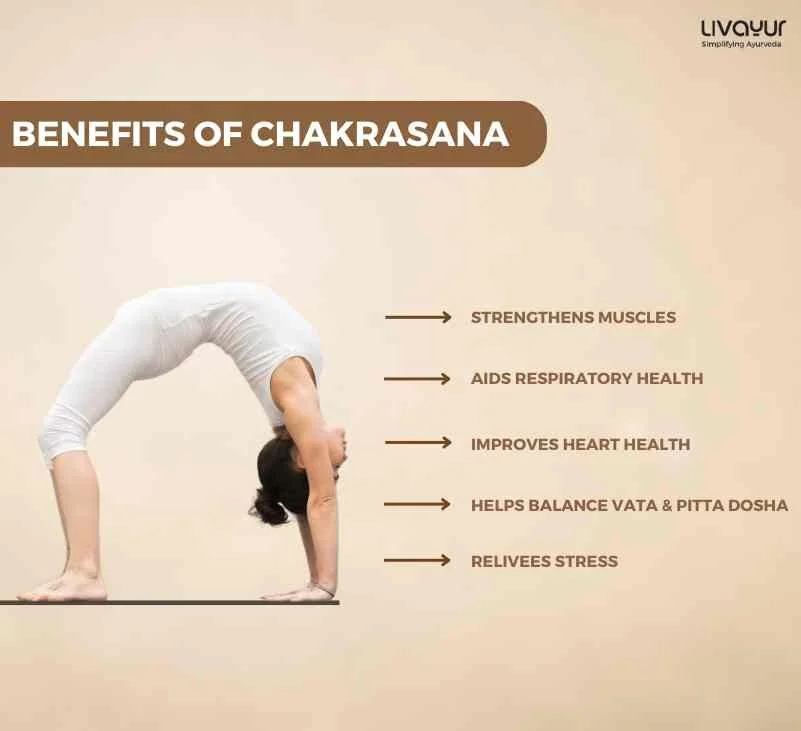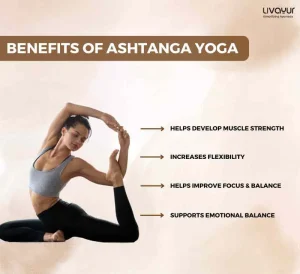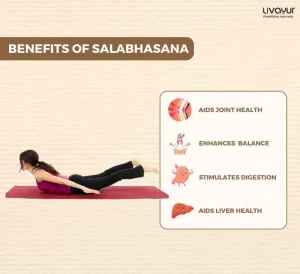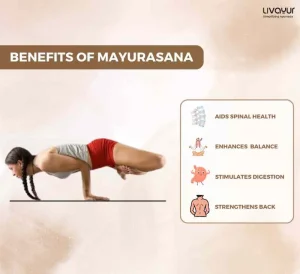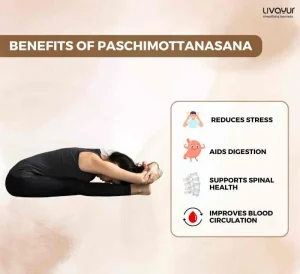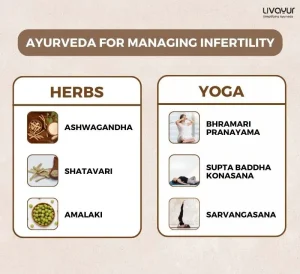This article is reviewed by an expert
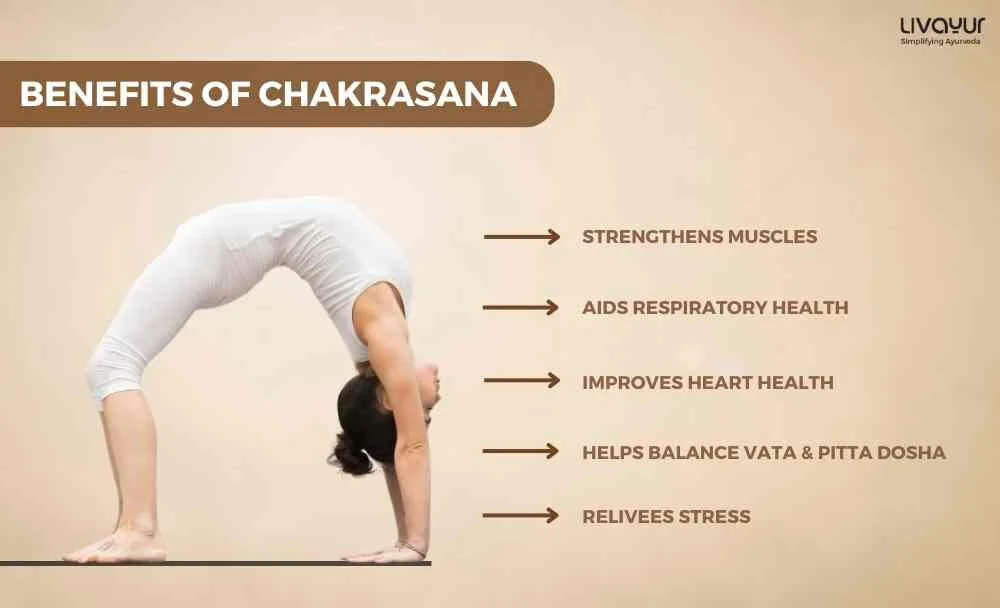
Practising yoga is an excellent way to improve your physical and mental well-being. There are many yoga poses, each with its own set of benefits.
One such yoga asana is Chakrasana or the Wheel Pose. Let’s have an in-depth look at Chakrasana and its benefits in this article.
What Is Chakrasana (1)?
Chakrasana, also known as Urdhva Dhanurasana, is a popular yoga asana known for improving flexibility in the spine. It is a backbend pose that is also commonly referred to as the Wheel Pose or the Upward Facing Bow Pose, as in this pose, the body takes on the shape of a wheel or an upward-facing bow.
Chakrasana is an effective way to strengthen the back, arms, and legs while improving posture and balance. This asana requires a great deal of physical strength and flexibility and should be performed with caution. It is important to warm up properly before attempting this pose and to listen to your body to avoid injury.
In addition to its physical benefits, Chakrasana is also believed to offer several spiritual benefits. Some practitioners believe that this asana helps to open and balance the chakras, which are the energy centres in the body. When all of the chakras are balanced, it is believed that a person will experience greater physical, mental, and emotional well-being.
How to do Chakrasana – Step by Step
- Begin by lying down on your back on a yoga mat with your arms placed beside your body, palms facing down, and your legs stretched out.
- Now, fold your legs and place your feet on the ground. Make sure that your feet are hip-width apart and that the soles of your feet are touching the ground.
- Bring your hands close to your shoulders, placing them on the mat with your fingers pointing towards your feet.
- Inhale deeply and press your hands and feet into the ground. Lift your hips, shoulders, and head off the mat, pushing your chest upwards.
- Keep your neck loose and allow your head to hang back as you bend your back as much as possible.
- Hold this pose for a minute while breathing normally, and then exhale slowly and lower your body back to the mat to release the pose.
If your hands and feet touch each other while in this pose, it is called Purna Chakrasana.
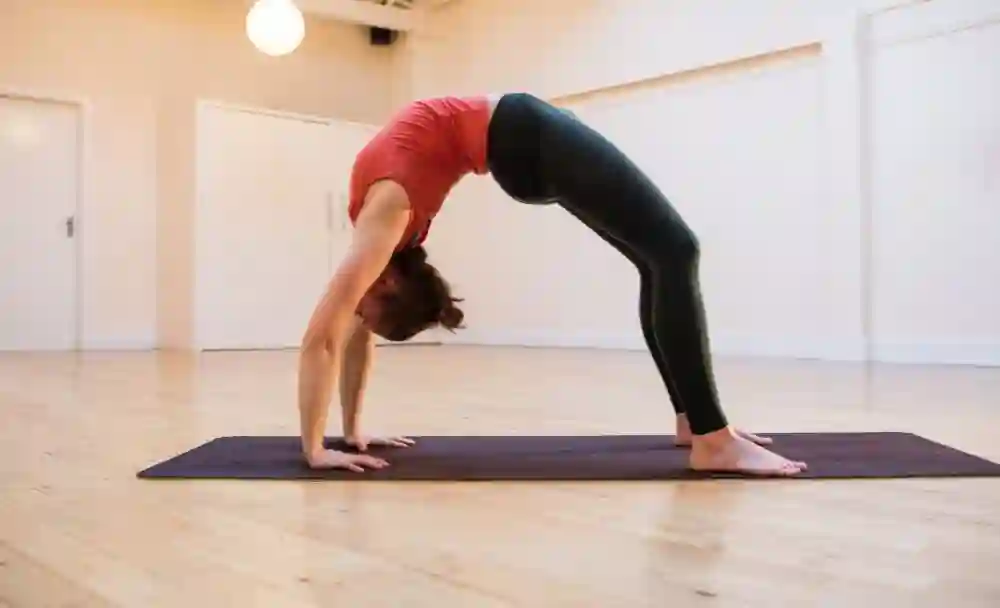
Chakrasana Benefits (1)
Strength & Flexibility
Primary Benefits: Chakrasana strengthens the muscles of the back, legs, arms, vertebral column, abdomen, and buttocks, making them stronger and more stable.
Secondary Benefits: In addition, Chakrasana also helps improve the flexibility of the spine, making it more supple and agile.
Organ Stimulation
Primary Benefits: Chakrasana stimulates the organs of the body, including the liver, spleen, kidneys, and digestive and reproductive organs, helping to maintain the normal functioning of the body.
Secondary Benefits: Chakrasana can hence also help reduce the risk of chronic diseases associated with these organs.
Respiration
Primary Benefits: Chakrasana enhances the functioning of the chest and the lungs, making them capable of holding more oxygen and improving respiration.
Secondary Benefits: As a result, Chakrasana can help enhance physical endurance, reduce fatigue and improve cardiovascular health.
Brain Function & Mental Health
Primary Benefits: Chakrasana induces brain cells and refreshes the brain, thereby improving mental clarity and focus.
Secondary Benefits: In addition, Chakrasana also helps reduce stress and tension in the body, leading to a calmer and more relaxed state of mind.
Dosha Balance
Primary Benefits: Chakrasana helps to balance the Vata and Pitta Doshas in the body.
Secondary Benefits: As such, it helps prevent the diseases caused due to the vitiation of these Doshas, including several gastrointestinal and skin problems.
Precautions & Contraindications (1)
- If you have tendonitis and carpal tunnel syndrome, it is best to avoid Chakrasana as it may put excessive pressure on your wrists and aggravate the condition.
- The extension in Chakrasana can sometimes cause lower back pain. If you experience discomfort or pain in your lower back, immediately come out of the pose.
- If you have a shoulder impingement, it is best to avoid Chakrasana as it may further strain your shoulders.
- People with high blood pressure or frequent headaches should also avoid Chakrasana as it may increase blood pressure and aggravate their headaches.
- Chakrasana must be performed on an empty stomach. Therefore, make sure to practise Chakrasana only after four to six hours of having your meal.
Tips for Beginners (1)
If you are a beginner attempting Chakrasana, here are some tips to keep in mind to avoid any injuries or discomfort.
- Your feet and knees may splay out as you lift your body, causing compression in the lower back. To avoid this, use a strap around your thighs to keep them hip-width apart during the pose.
- To keep your feet in place, you can use a block between them so that the sides of your big toes press against the edges of the block.
These props can help you maintain proper alignment and prevent any strain or injury while attempting Chakrasana as a beginner.
Advanced Variations of Chakrasana (1)
If you’re looking to intensify the pose, try Eka Pada Urdhva Dhanurasana. The steps to do this pose are:
- Start with the Wheel Pose and then shift your weight onto one foot.
- As you exhale, bend the other knee and bring it into your torso.
- Exhale and stretch that leg upwards, holding the pose for a few seconds.
- Then, bring your knee back to the floor as you exhale.
- Repeat the pose with the other leg.
On a Final Note
Chakrasana or Urdhva Dhanurasana is a backbend yoga asana that can improve flexibility in the spine, strengthen the back, arms, and legs, improve posture and stimulate the organs of the body. Practising Chakrasana can help enhance respiration, brain function, mental health, and Dosha balance.
However, remember to always perform Chakrasana with caution, and use props to maintain proper alignment and prevent injuries if you are a beginner. It’s also advised to take the help of a yoga instructor.




